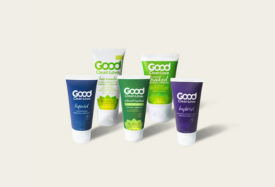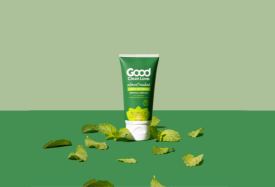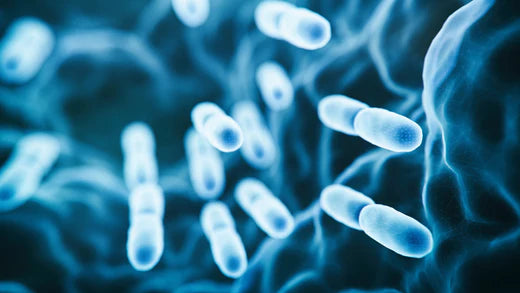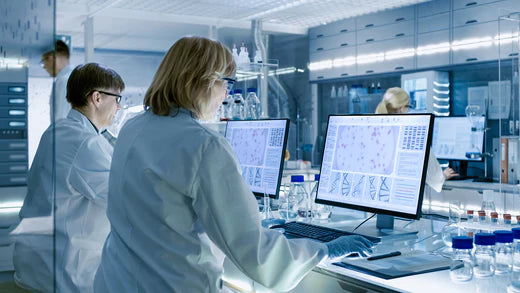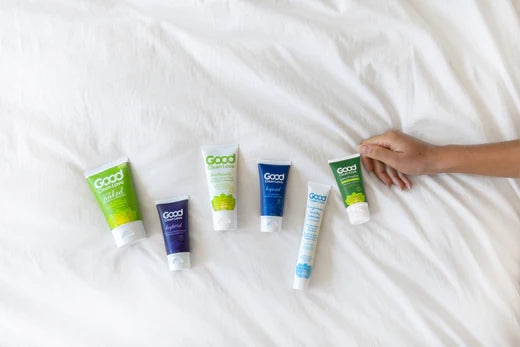Ready to chemically detox your daily routine? Our friends at MADE SAFE helped us compile a list of five toxins to avoid.
It can be overwhelming how many chemicals are present in everyday life. Sometimes you think that there’s almost no point in trying to avoid them. MADE SAFE assures you: there is a point.
Every step to reduce harmful chemicals, no matter how small, makes a difference in levels of toxic chemicals in your body. How do we know? Check out this study on girls who switched cosmetics for 3 days and showed a significant drop in hormone-disrupting chemicals in their bodies. Or this study on how people who stopped eating canned food and food packaged in plastic for a few days showed a 60% drop of the hormone disruptor BPA in their blood.
When it comes to chemicals to avoid, we suggest starting with this list of toxic chemicals that are prevalent in everyday products. None of these chemicals are permitted in MADE SAFE certified products.
1. Formaldehyde
What Is It?
Formaldehyde and formaldehyde-releasing ingredients are generally used as preservatives. Short-term health impacts linked to formaldehyde include irritation to the eyes, nose, and throat, and many studies show it causes allergic skin reactions and skin rashes. Formaldehyde is listed as a known carcinogen by the National Toxicology Program and the International Agency for Research on Cancer.
Where Is It Found?
In personal care, formaldehyde and formaldehyde-releasing preservatives are most often found in shampoos and liquid baby soaps. In salon products, it’s found in nail polish, nail hardener, nail glue, and eyelash glue. It’s also common in many hair straighteners, when it’s released with high heat during the application process.
How Can You Avoid It?
- Read labels for formaldehyde and formaldehyde-releasing preservatives like quaternium-15, DMDM hydantoin, imidazolidinyl urea, diazolidinyl urea, polyoxymethylene urea, quaternium-15, hydroxymethylglyconate and bronopol (2-bromo-2-nitropropane-1-3-diol).
- Look for nail polishes labeled “three-free, which means they don’t contain the “toxic trio” of formaldehyde, dibutyl phthalate, and toluene (although some tests have shown that some of these polishes making this claim still contain these chemicals, using “three-free” polishes is still widely considered a good step).
- For babies: choose simple products without preservatives that use ingredients that you can pronounce and recognize as safe.
- Given the prevalence of formaldehyde in chemical hair straighteners and smoothers, it’s best to avoid these altogether and opt for a hot iron.
2. Phthalates
What Are They?
Phthalates are common fragrance ingredients used as carriers to help make the scent linger. They’re also used in consumer products as a plasticizer to make something less brittle. Phthalates have been linked to a wide array of health problems, including endocrine disruption (both developmental and reproductive toxicity), as well as childhood asthma. According to Women’s Voices for the Earth’s What’s That Smell report, phthalate exposure in males has been linked to lower sperm counts and altered sperm quality, and in females exposure can affect thyroid levels and alter thyroid function.
Where Are They Found?
Fragranced cosmetics and personal care products, and plastics.
How Can You Avoid Them?
Phthalates can be hard to avoid in fragranced products, as most labels will simply list “fragrance” and keep secret the ingredients that make up that fragrance. But here are some good options:
- Reduce your use of fragranced products where possible and opt for products that disclose all fragrance ingredients on the label, sourcing scent only from pure essential oils.
- Read labels on nail polishes and avoid ones that list DBP as an ingredient.
- Reduce your use of plastic products and try and eat less food packaged in plastics.
3. Dioxane
What Is It?
1,4-dioxane (sometimes just called dioxane) is not an intentionally-added ingredient in products. It’s a contaminant that’s created when certain common ingredients are mixed together in a process called ethoxylation, when ethylene oxide is added to other ingredients to make them less harsh. 1,4-dioxane is listed as a known or probable carcinogen by several scientific agencies, including appearing on California’s Proposition 65 list as linked to cancer, as a known animal carcinogen by the National Toxicology Program, and as a likely human carcinogen by the U.S. Environmental Protection Agency.
Where Is It Found?
1,4-dioxane is most often found in products that suds, like shampoos, shower gels, dish soaps, and laundry detergents. It’s also been found in toothpastes, mouthwashes, deodorant, and hair dyes.
How Can You Avoid It?
While 1,4-dioxane won’t appear on ingredient lists because it’s not intentionally added, you can avoid these chemicals that are commonly contaminated with it:
- Sodium laureth sulfate
- PEG compounds (usually listed as “PEG” followed by a number)
- Chemicals that end in “eth” (denotes ethoxylation), like ceteareth and oleth
- Chemicals that include the “-xynol” in the name
Also look for USDA Organic certified, which doesn’t allow ethoxylation processes.
4. PFOA
What Is It?
Perfluorooctanoic Acid, commonly known as PFOA, is an endocrine disruptor linked to cancer. In addition, it’s persistent (which means it stays in the environment) and bioaccumulates (which means it stays in the human body for long periods of time).
Where Is It Found?
PFOA is used in non-stick cookware (think Teflon) and other non-stick coatings like Gore-Tex, or in carpet and furniture that have been treated to be stain resistant. It can even be found in makeup such as eye shadow, powders and anti-aging creams.
How Can You Avoid It?
- Switch from non-stick cookware to cast iron or stainless steel.
- Try to avoid stain-resistant materials where possible, including clothing, carpets, and furniture.
- Make sure it’s not listed in your makeup as PFOA or as PFTE or Polyacrylimde.
5. BHT and BHA
What Are They?
BHT (butylated hydroxytoluene) and BHA (butylated hydroxyanisole) are closely related chemicals that are used as preservatives. These two chemicals are linked to a wide range of serious health problems, including organ system toxicity, skin irritation, and more. BHA has been linked to reproductive and developmental toxicity, and the European Commission on Endocrine Disruption has listed BHA as a Category 1 endocrine disruptor, meaning there’s comprehensive evidence of endocrine disrupting effects. It’s also been identified on California’s Proposition 65 list as a possible carcinogen, and in the National Toxicology Program’s Report on Carcinogens as “reasonably anticipated to be a human carcinogen”.
Where Are They Found?
BHA & BHT are commonly used in cosmetics, personal care products (mainly shampoos, deodorants, body lotions), and even food and food packaging.
How Can You Avoid Them?
Luckily, BHT and BHA appear on labels, so you can read ingredient lists on cosmetics, personal care, and food items to avoid them.
Like this article about living a green life style and how to chemically detox? Want to learn more about MADE SAFE? Read our interviewwith the first human-health centered nonprofit that regulates products across across all consumer categories — from laundry detergent to lubricants.


